Sometime in the spring of 1889, Alderman John Symons started on a walk from his home at 15, Coltman Street He wended his way through the newly laid out West Park. He then strolled down Spring Bank West commenting that the last time he had been that way it was a ‘grassed lane and now was a flagged footpath.’ His aim was to walk around Hull General Cemetery for a possible article for the Eastern Morning News.
At the entrance to the Cemetery he met William Hodsman, manager of the monumental works for the Cemetery. Together they strolled and John Symons reminisced. Stonemason of the Cemetery; part two.
His reminiscences are a valuable resource now. Through his eyes we can look back to a time over 130 years ago and catch a faint glimpse of Hull General Cemetery in its pomp.
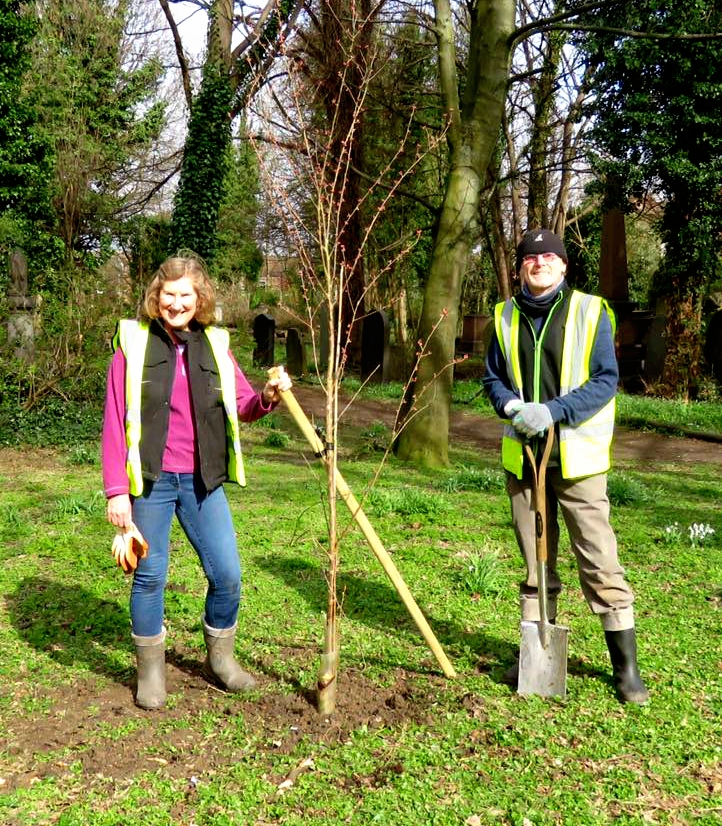
Probably with this idea in mind, some time in the spring of 2021, volunteers Karen and George decided to retrace John Symons’ journey that day. Here’s what they found.
The walk
Symons’ comments are in bold. Karen and George’s are in italics.
In 1889 Alderman John Symons wrote the book Kingstoniana – Historical Gleanings and Personal Recollections. One chapter, A visit to the Spring Bank Cemetery, is fascinating. I thoroughly recommend buying a copy. “meditations amongst the tombs” – the quotes are from that chapter.
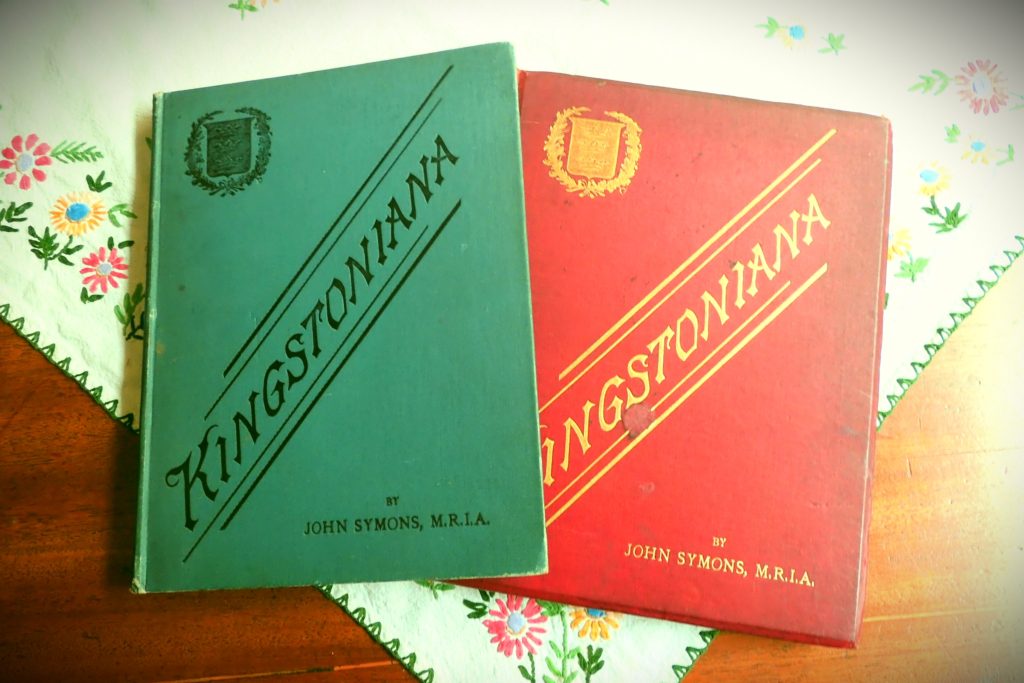
Today George and I retraced his route, as closely as possible, pausing at the 24 headstones that still remain today. I hope you enjoy.
We retraced our steps many times carefully following John Symon’s route. Over 6,000 steps.
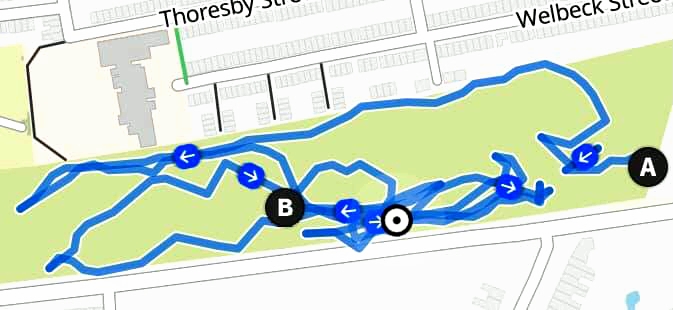
The remaining stones; Clowes to Wilde
“The last time I visited the cemetery…there was scarcely a grave near the tomb of the Rev William Clowes”
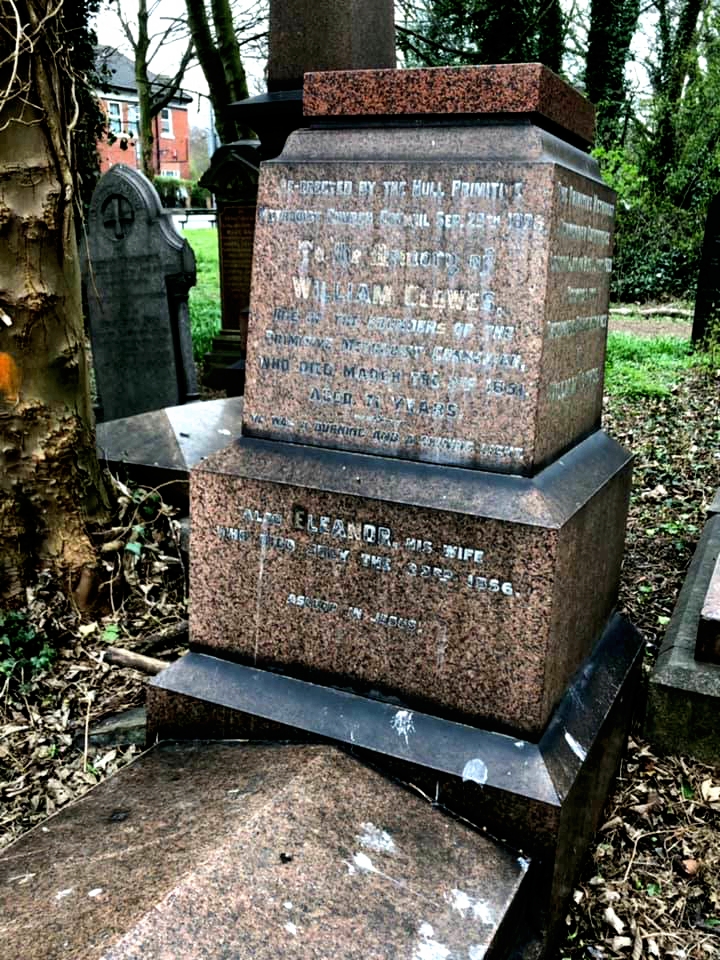
“Here is the stone tomb, erected to the memory of Captain Cape…He was a diminutive, delicate-looking man in life”
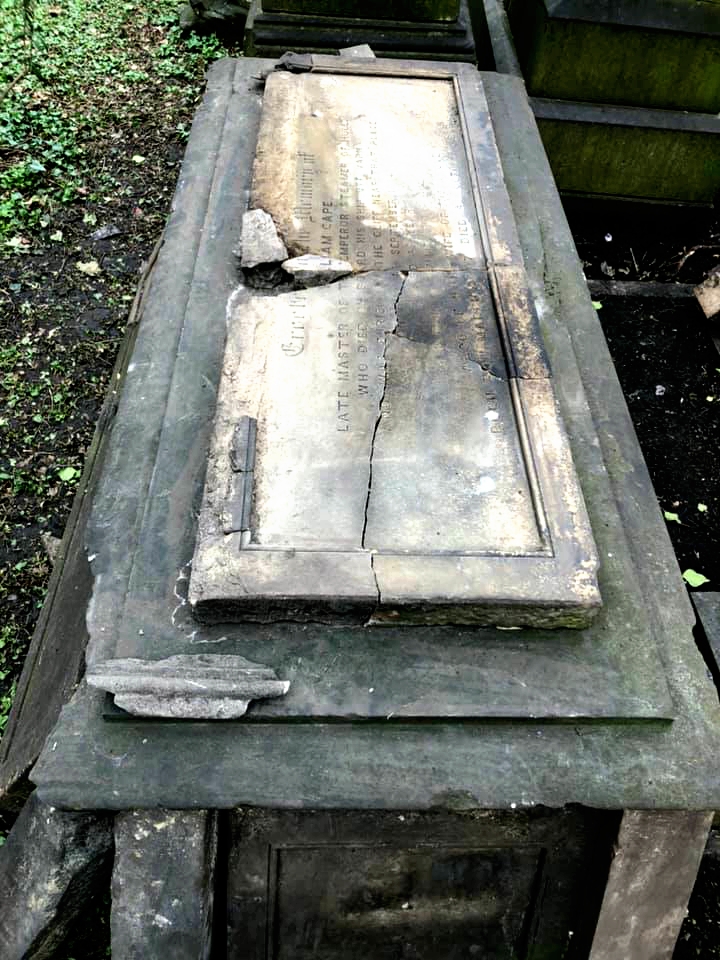
“A little further on, is a neat tomb, denoting the spot where rest the remains of the late Rev. T. Stratten”
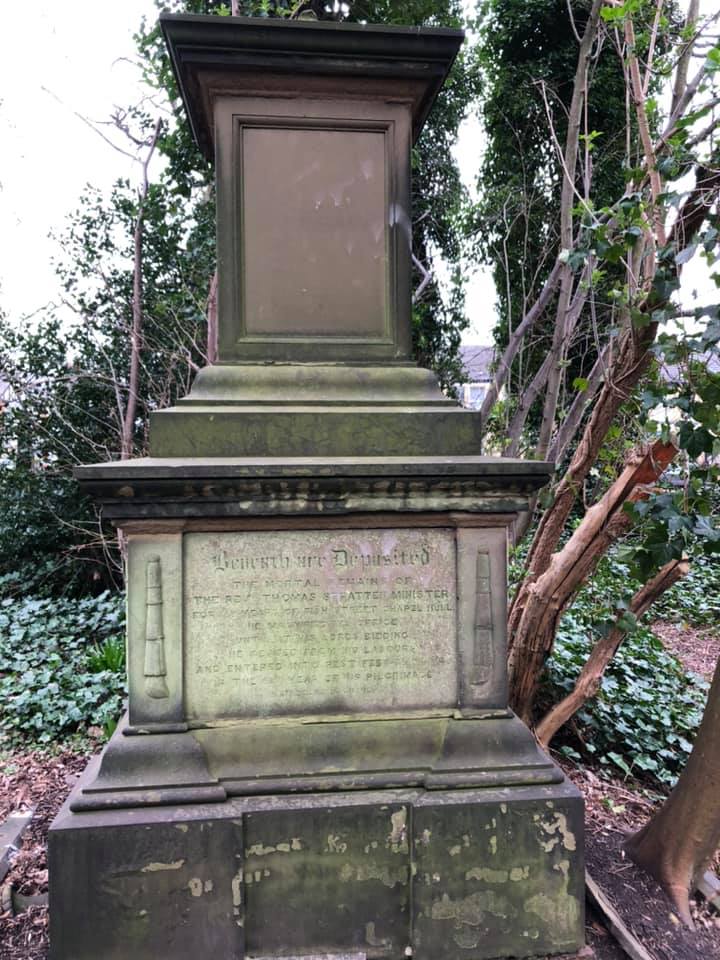
“Opposite to Mr. Stratten’s tomb may be seen that of Mr. William Irving, J.P, Mr Stratten’s friend”
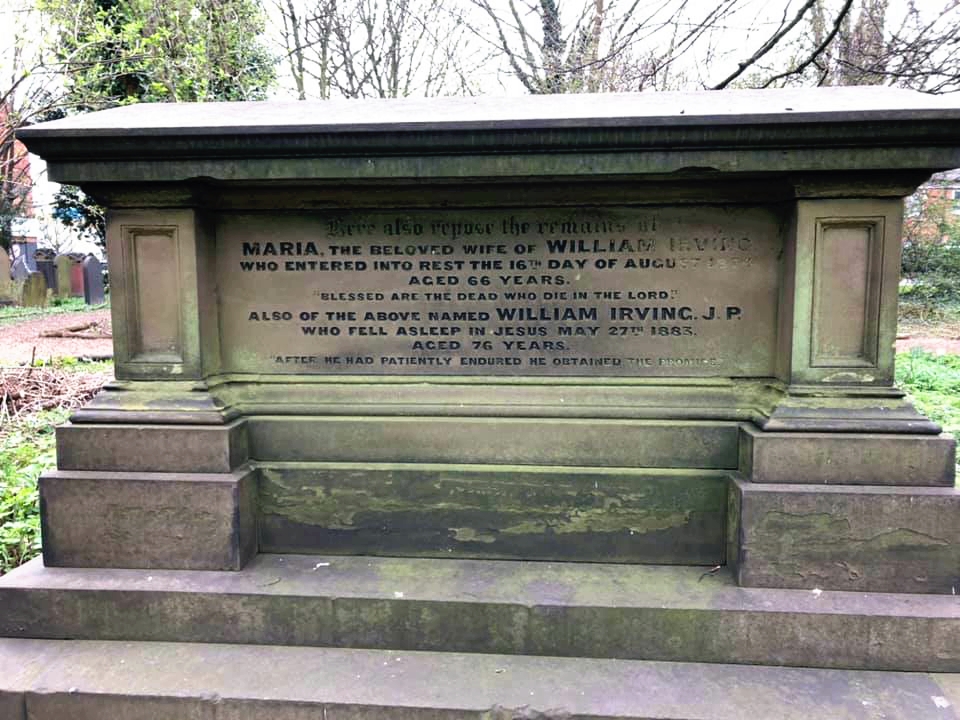
“The next monument that attracts the eye is that of Thomas Wilde, better known by the familiar friends of his day as “Tom”
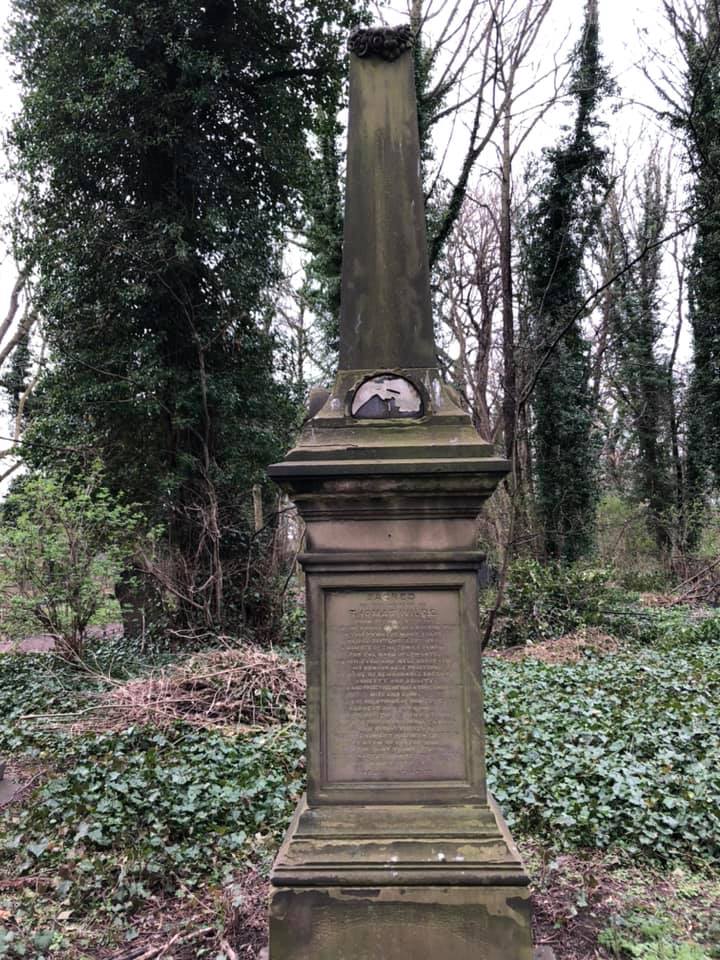
Hodge to Fountain
“A granite obelisk adjacent perpetuates the memory of William Hodge who from a humble position rose to considerable social influence”
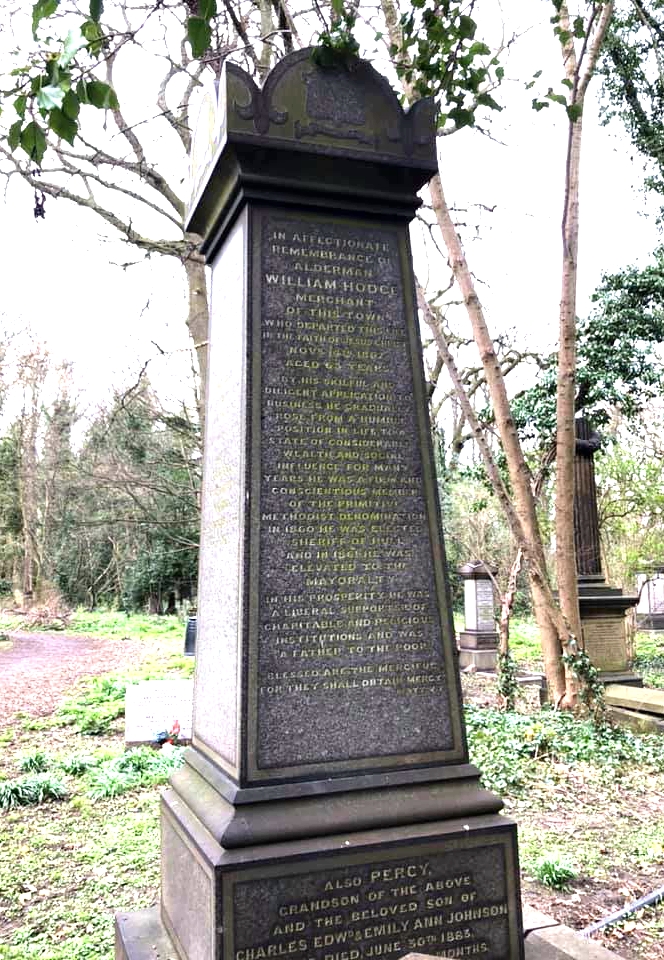
“While I was standing admiring the foliage of a splendid cypress tree, I discovered the resting-place of the prince of manufacturers, Mr. Alderman Blundell”
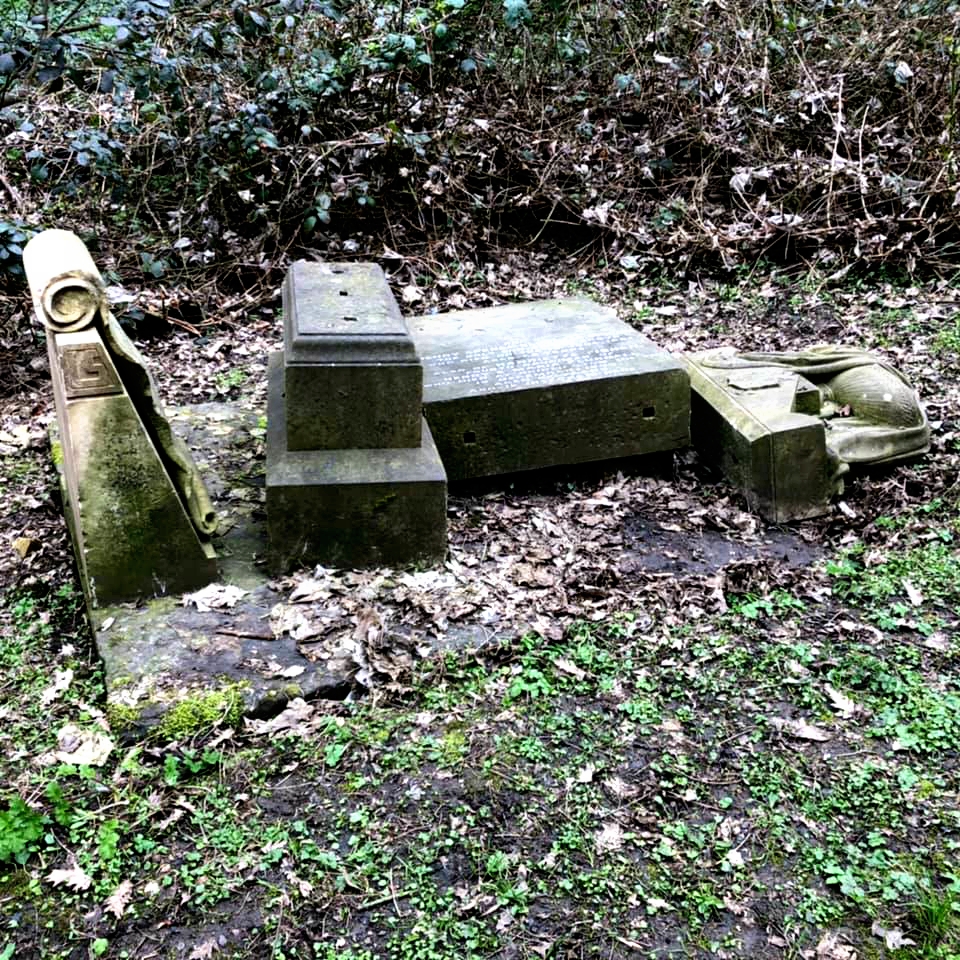
“The epitaph notifies that it was erected by subscription to the memory of Captain John Gravill, who during a period of forty years, was engaged in the northern whale and seal fishery.”
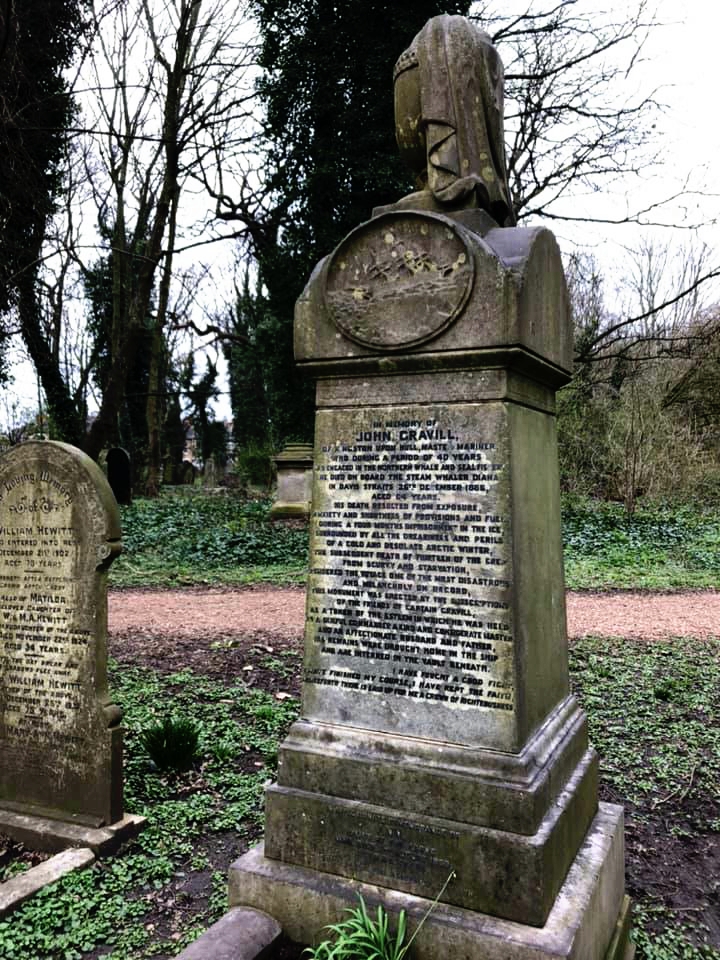
“The Hull Guardians of the Poor negotiated with the company for the purchase of a plot of land for the burial of the Workhouse Inmates. Alderman John Fountain was the Governor at that time”
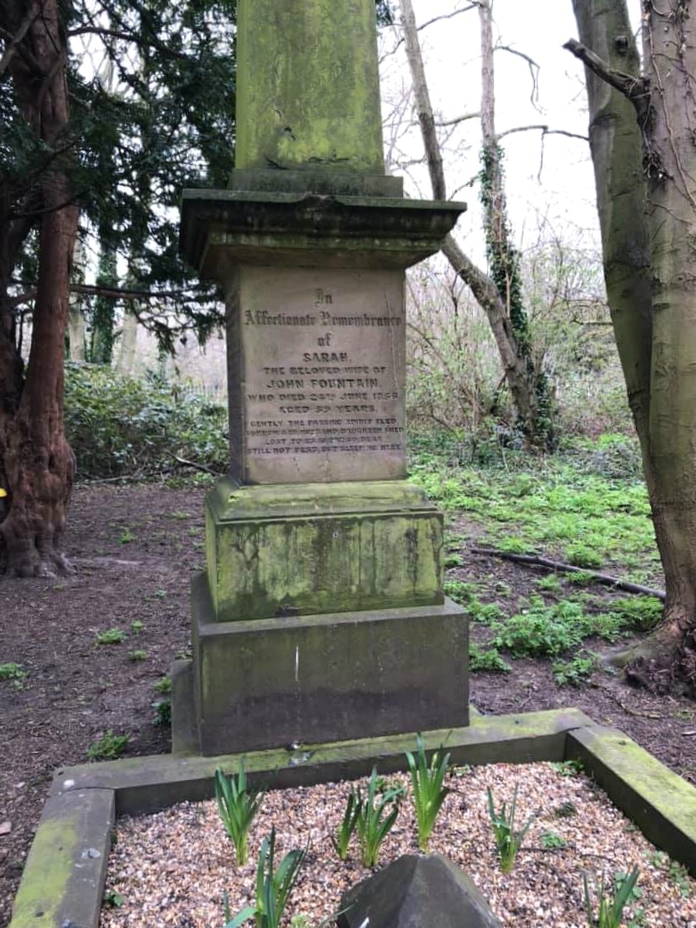
Dr Beck to Flint
“Near these lowly graves is a slate-coloured slab, bearing a coronet, as if in mocking contrast to those around it. It is raised to the memory of Count de Wendinsky, of Worden Castle, in Galicia, a Polish patriot exiled from his home, who resided in Hull, under the assumed name of Dr. Beck”
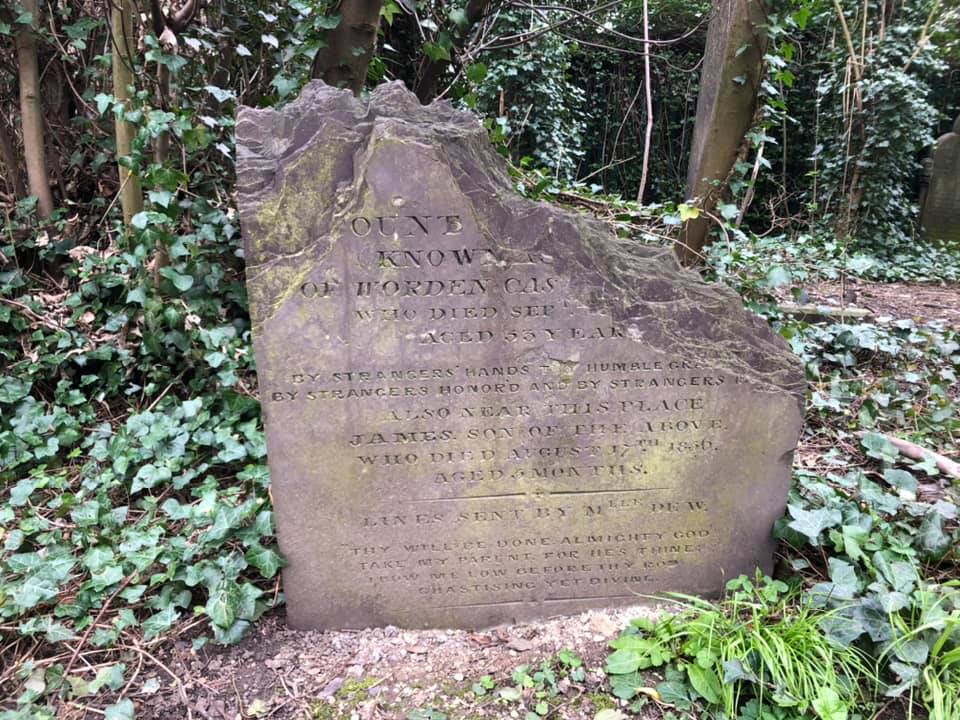
“Opposite Mr. Middleton’s grave (no longer exists) is a pyramid, “To the memory of John Lumsden, J.P.” John Lumsden
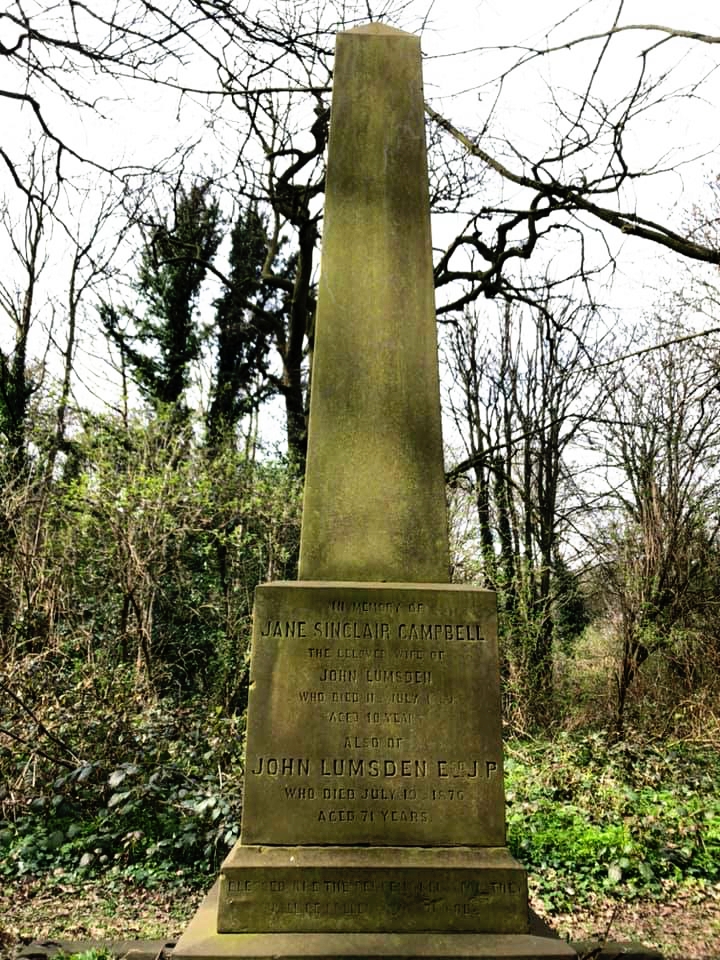
“…may be seen the funeral columns to several public men, amongst which may be found the names of “W.B. Carrick J.P., formerly Mayor of this town”
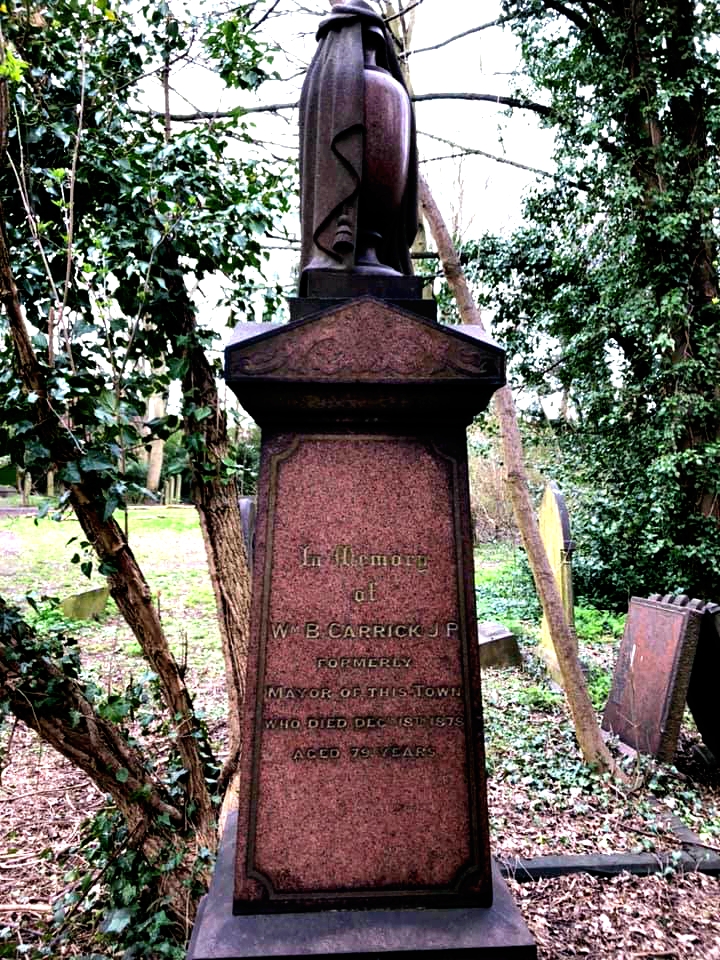
“and “W.W. Darling,” all once men of Mark”
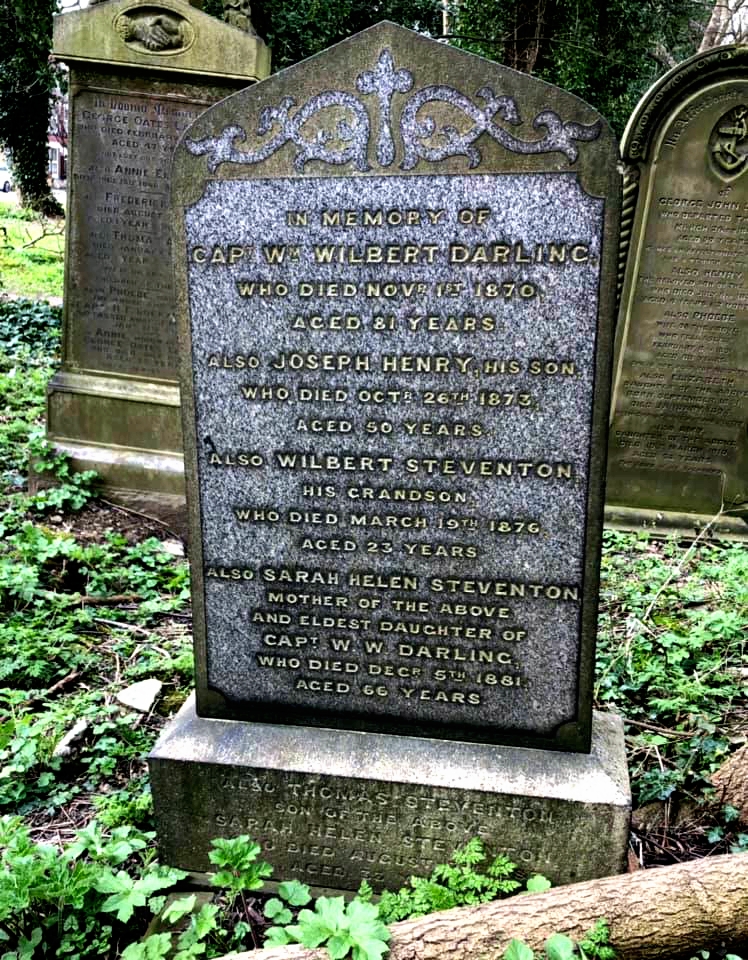
“Our attention is attracted to a plain grave with a white marble kerb. Lying in the centre, is a magnificent and chaste sculptured cross. It is placed in memory of one of Hull’s most kind and tender-hearted citizens, who was truly one of nature’s nobility….”T. W. Flint J.P.”
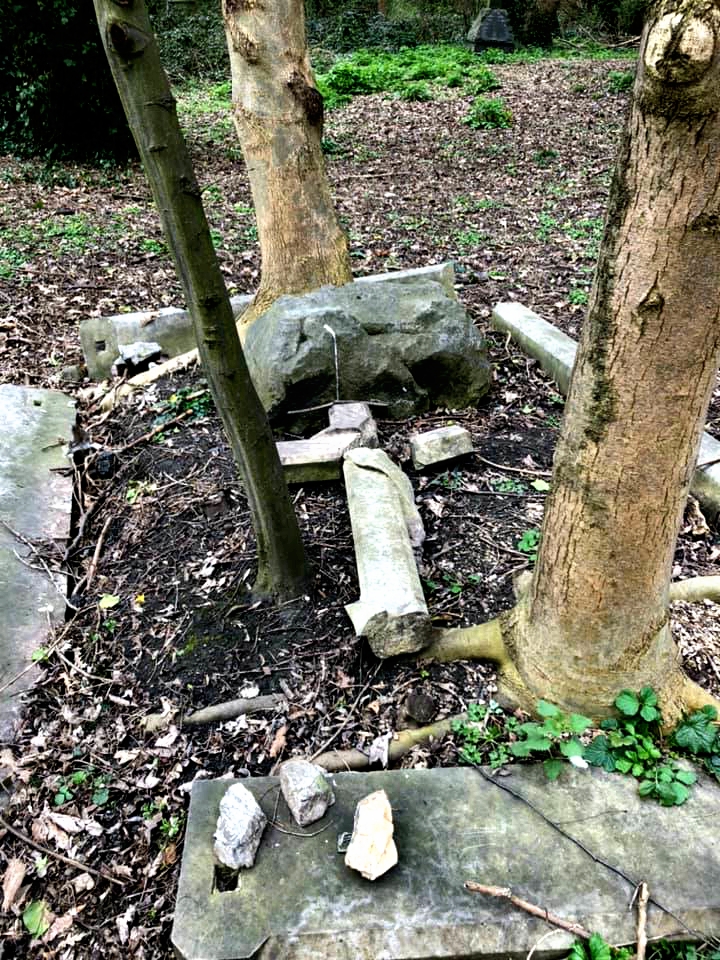
Roberts to Rollit
“The next obelisk that attracted my attention was that of the late gifted and eloquent Alderman George Christopher Roberts….who, by the unaided force of a clear intellect, indefatigable energy, and rare talent, rose to the high offices in this, his adoptive town, of Alderman, Town Clerk, and Mayor”
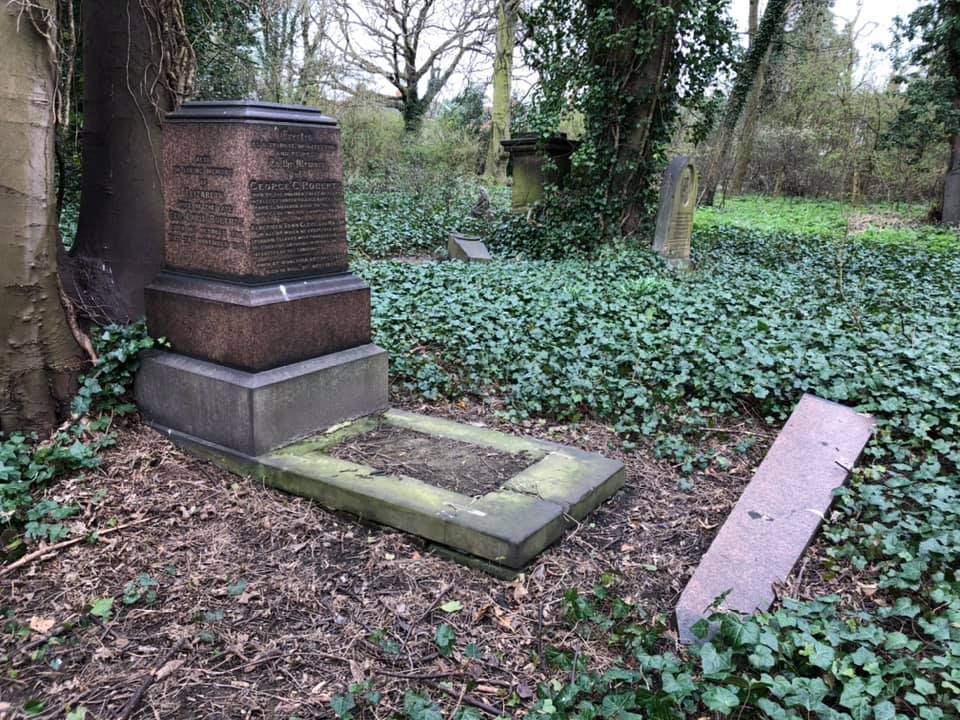
“A few steps onwards brought me to the monument that self-made merchant who, from humble beginnings, became Alderman, Justice of the Peace, and twice Mayor of Hull. I refer to the late Thomas Thompson.” Thomas Thompson
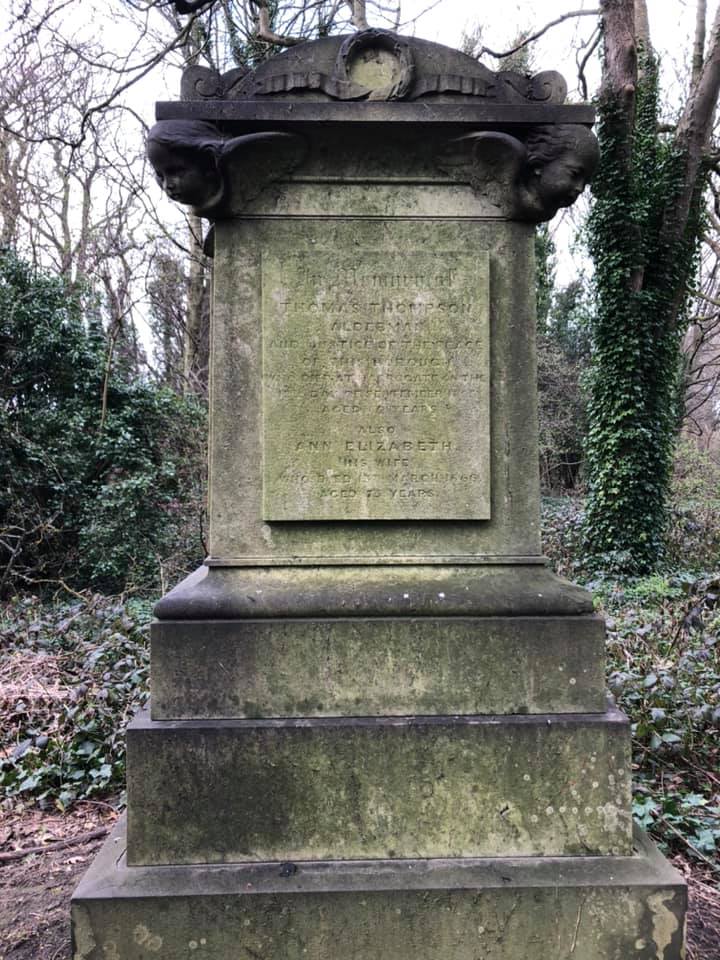
“Nearly every religious denomination in this town have secured allotments for their dead, and here is one dedicated to the Society of Friends. How noteworthy is the simplicity of their memorials, which have the appearance of stone couches. In reading the names of the sleepers, I noticed one to the memory of Mr. Samuel Priestman”
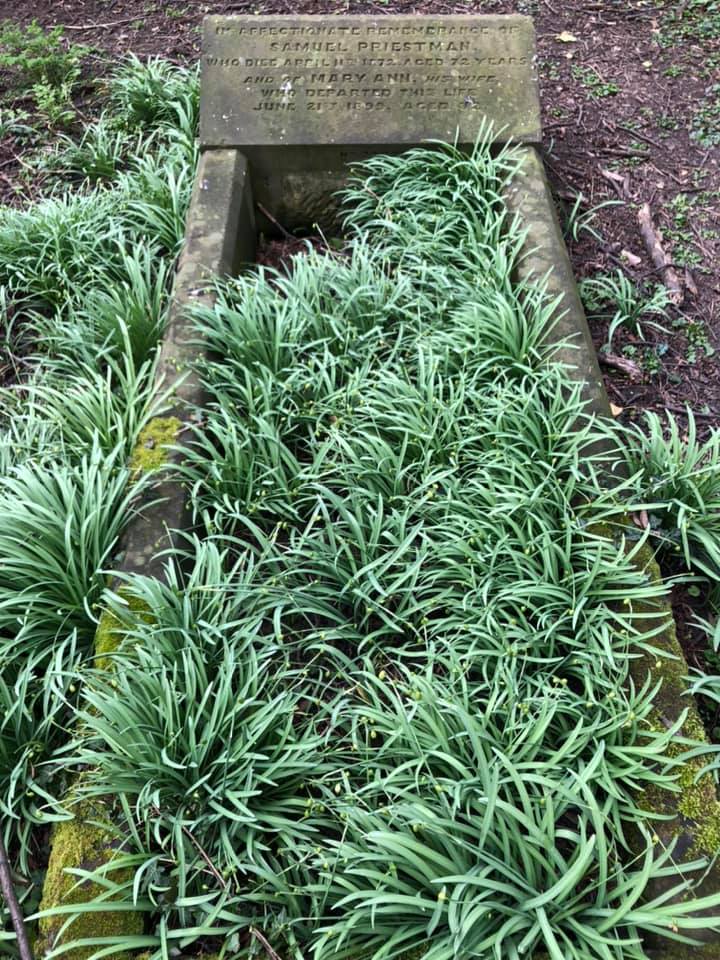
“I have now arrived at that portion of ground consecrated according to the rites of the Church of England. The first vault that attracted my attention was that of the family of our distinguished townsman, Sir Albert Kaye Rollit, M.P.”
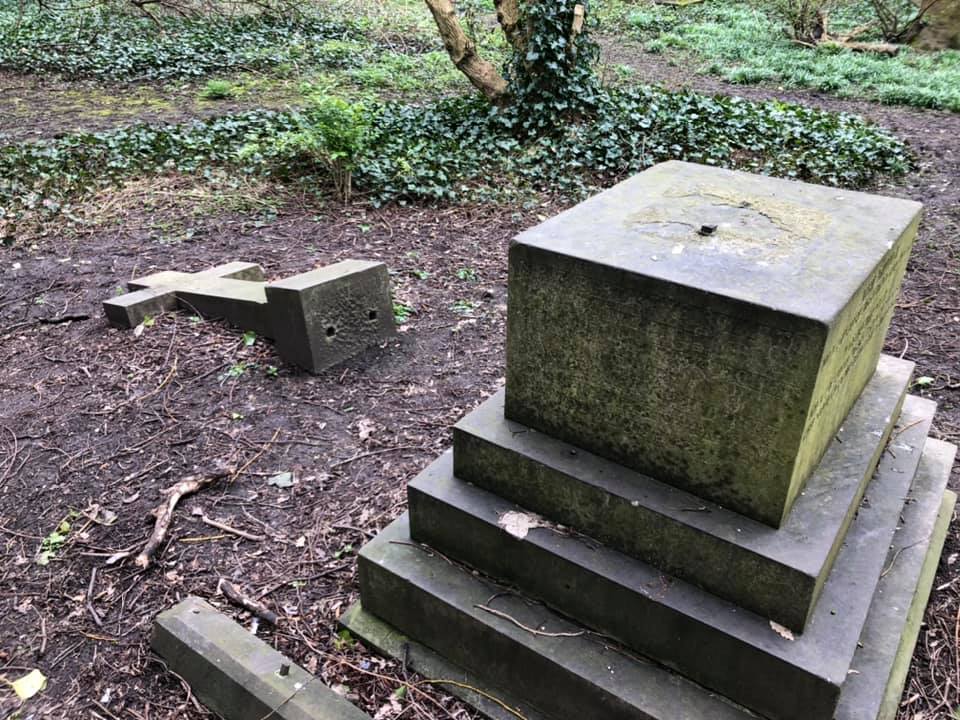
Rylands to King
“…a colossal stone obelisk inlaid with marble crests and coats of arms. It is erected to the memory of the late Joseph Rylands, at one time the largest sailing ship owner, and one of the most enterprising merchants Hull has had”
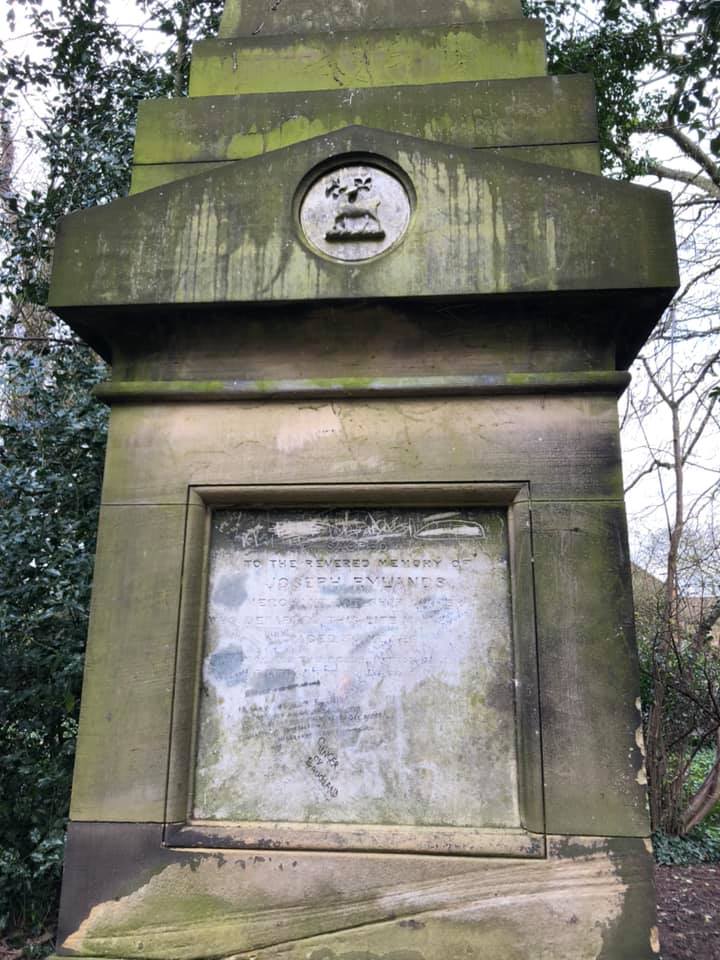
“There is a very pretty sculptured obelisk standing by itself on the extreme right in this vicinity; it is erected to the memory of W. H. Pearson, aged forty-two years, late of the firm of Brownlow and Pearson”
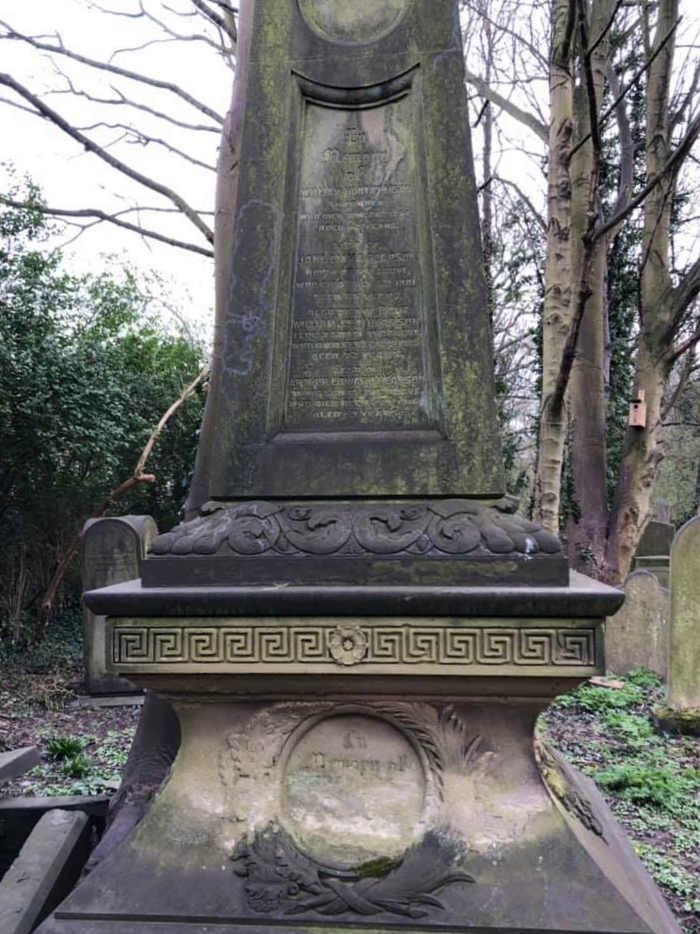
“Opposite is a massive Carrara marble sarcophagus, which states that “Here lieth the remains of Thomas Earle (sculptor, of London), born at Hull June the 5th, 1810; died at London April 28th, 1876.” The statues of her Majesty the Queen, and Prince Albert, in the Pearson Park, were the handiwork of this eminent sculptor”
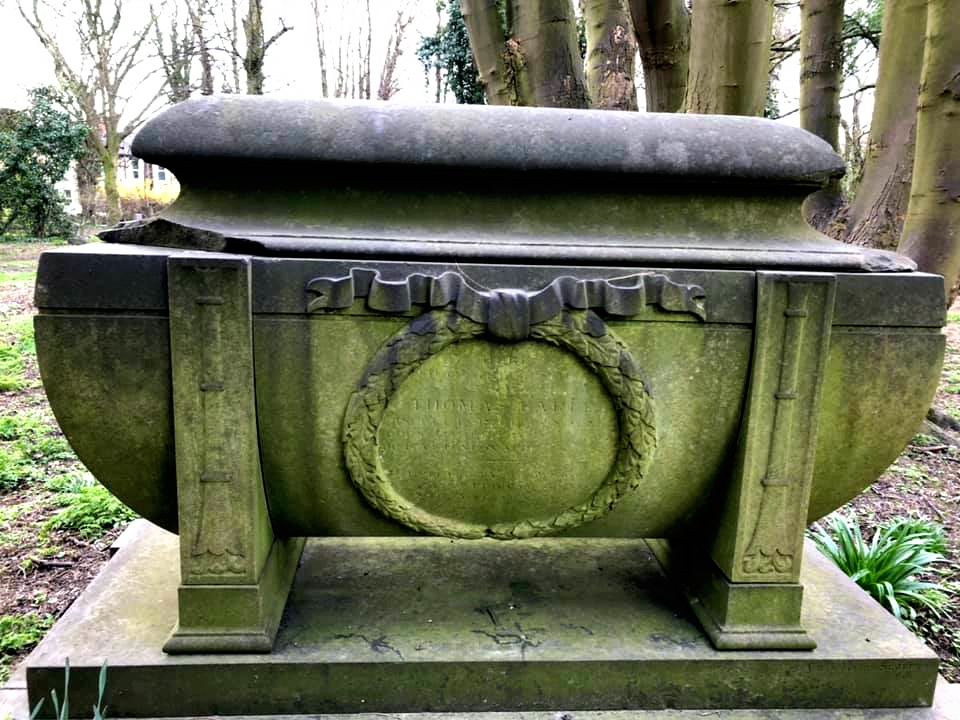
“I next paid a pilgrimage to the high pinnacle in memory of the lamented Dr. Gordon, who devoted his life to the political elevation of the working men of Hull” Dr. William Gordon
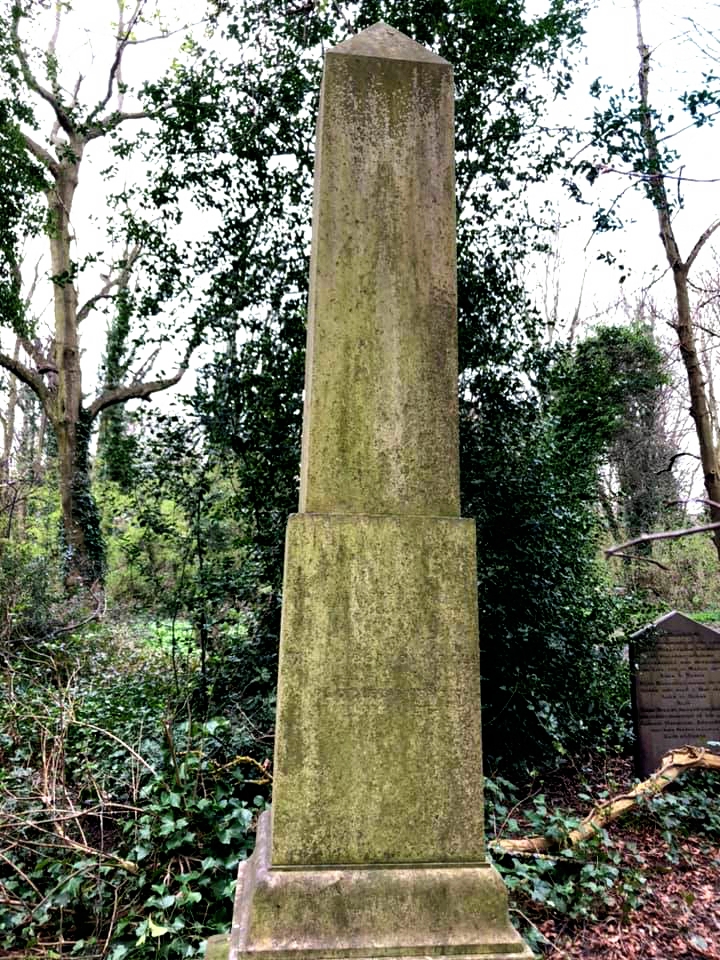
“a man who did useful work for the town. There could have been very few of the inhabitants of this borough to whom the late Alderman Abbey was not well known, for during his lifetime extending over fourscore years, he had never ceased from activity in public affairs”
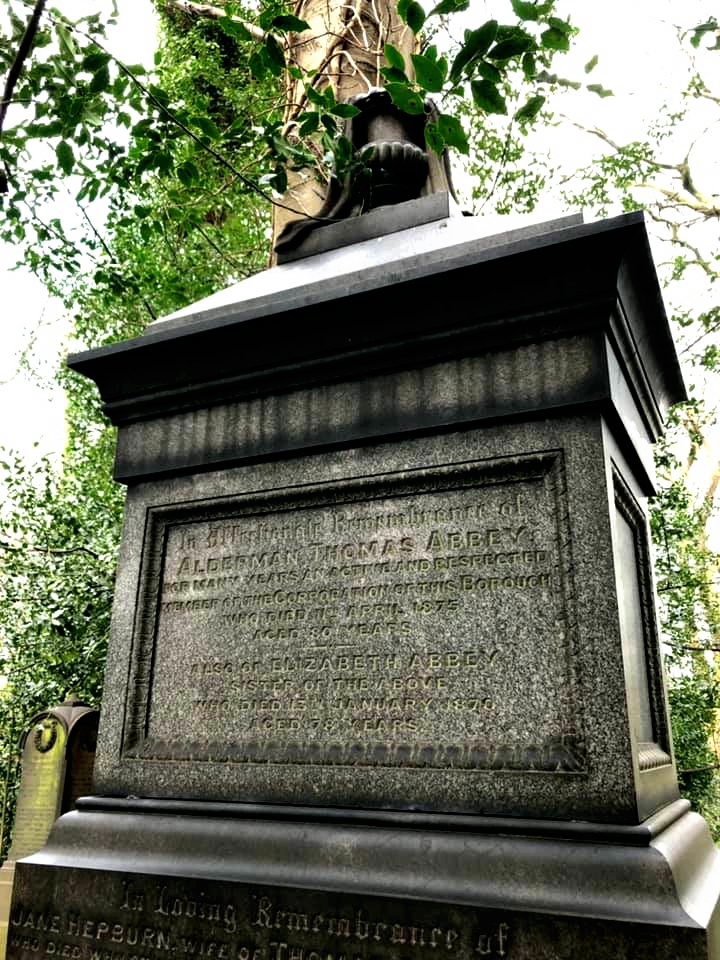
“…the resting place of the late Alderman King, during his life-time one of the most respected medical men in the town. The headstone, which marks his grave, is of Scotch granite, and a cross of the same material stands upon a pedestal of rough rockery stone.”
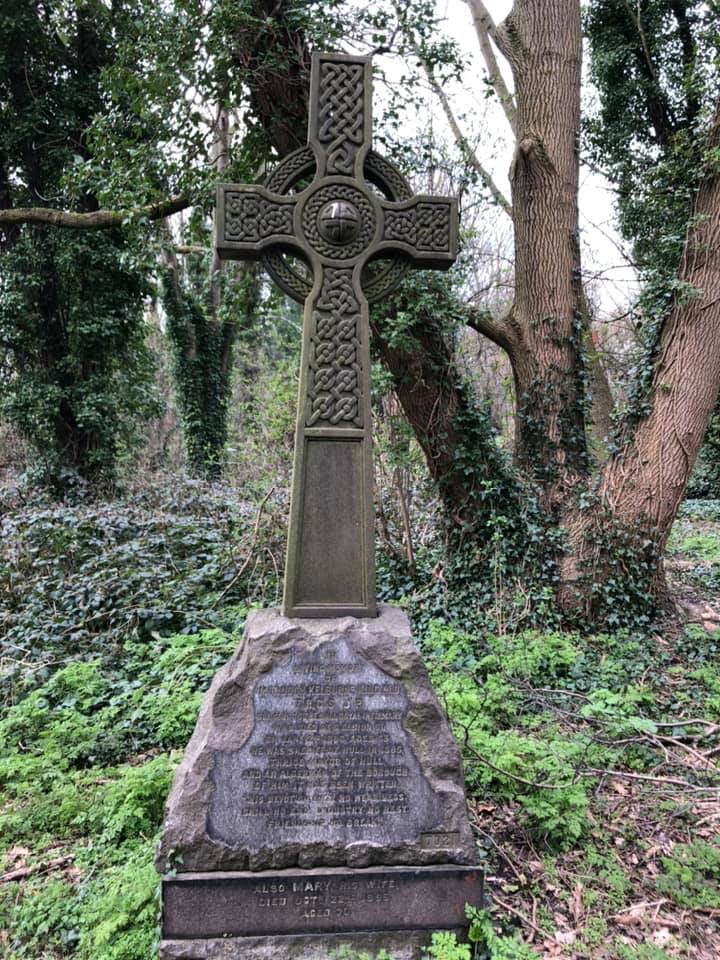
A very round about route
This was the extent of Karen and George’s expedition. For anyone who knows the Cemetery it is obvious that many of the stones mentioned are quite distant from the next one described by Symons. Indeed, if he did this route, it was quite circuitous . As Karen said, over 6000 steps, and just in the cemetery.
Let’s not forget that he had walked from Coltman Street and presumably would have gone back home. I think he may have hailed a cab from the stand outside the Cemetery. I know I would have done.
John Symons’s grave
That Symons did this walk is interesting. John Symons was a Jew. His burial place would not have been this cemetery. Why was he doing this walk? Surely not simply to fulfil a promise to an editor. No, I believe it was probably for the reason he cites in his final paragraph,
‘A visit to this Cemetery now and then is good for the soul, for from the sepulchral slabs may be learned sacred lessons.’
I can’t argue with that. It works for me.
He was finally laid to rest in Delhi Street Jewish Cemetery on Hedon Road. Karen and George contacted the custodian of that site, Mr Phillip Daniels. He escorted them to John Symons’s last resting place.
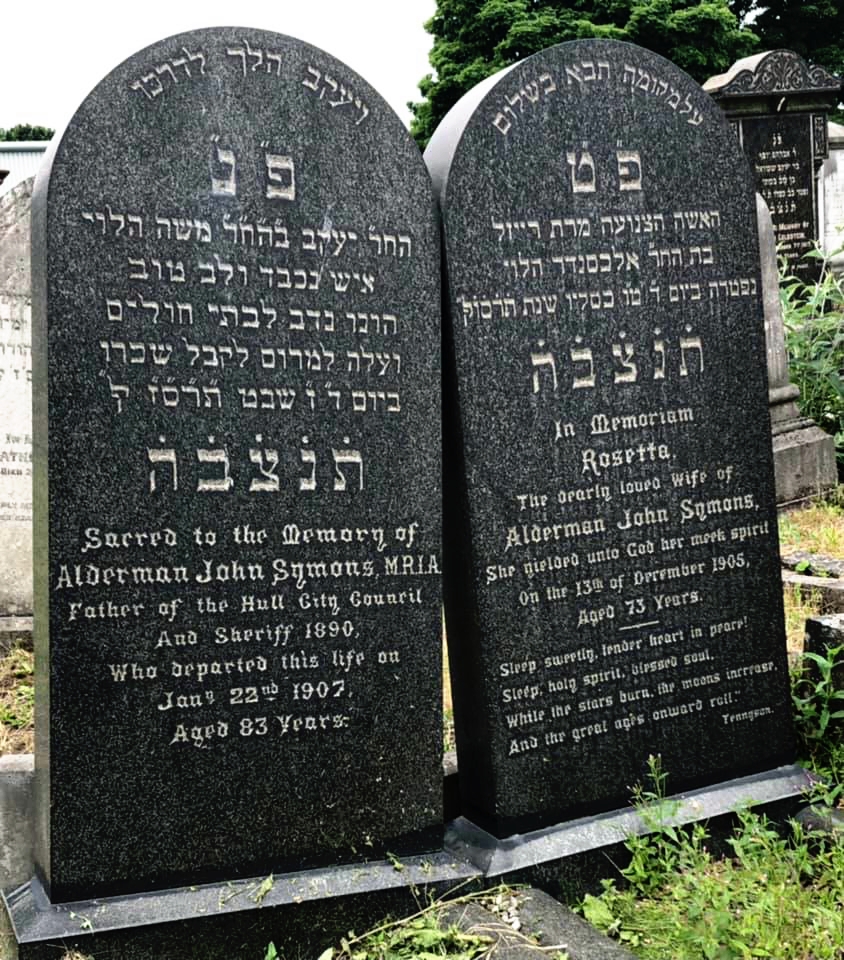
Not only us, latter day followers of a true ‘influencer’, should be grateful for Symons’ work.
The day after his funeral his will was read. Included in that will was a bequest. A bequest to the ‘incurable sick’ of Hull. That sum, using the measuring worth website, ranges from almost £2 million pounds up to £18 million today. https://www.measuringworth.com/
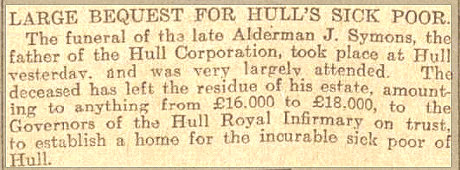
What a thoroughly nice man.

Pete Lowden is a member of the Friends of Hull General Cemetery committee which is committed to reclaiming the cemetery and returning it back to a community resource.

